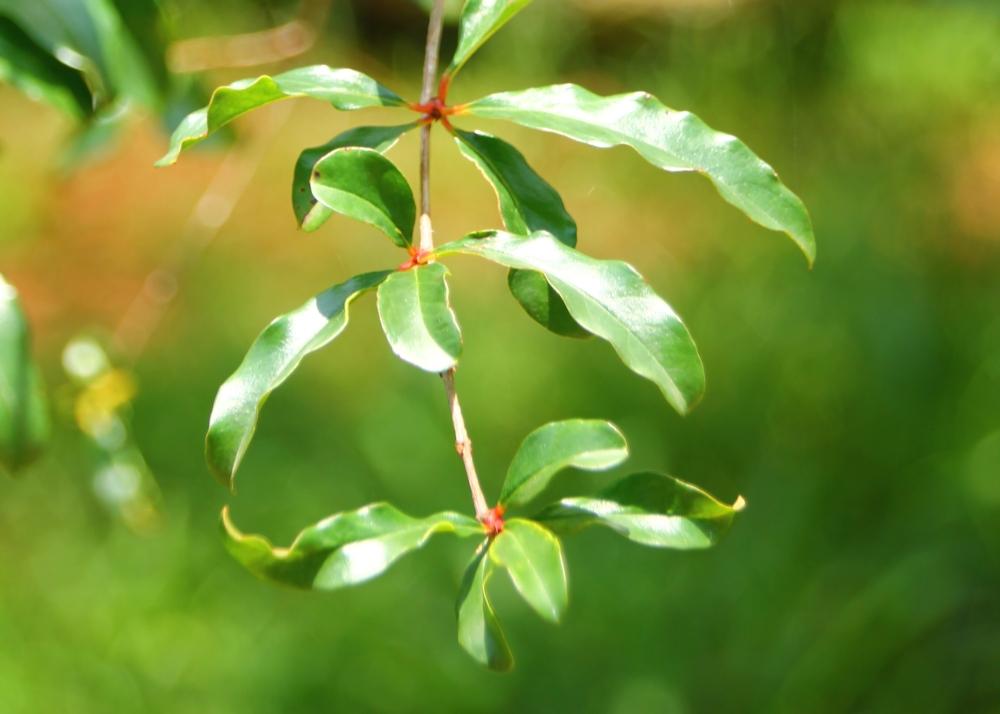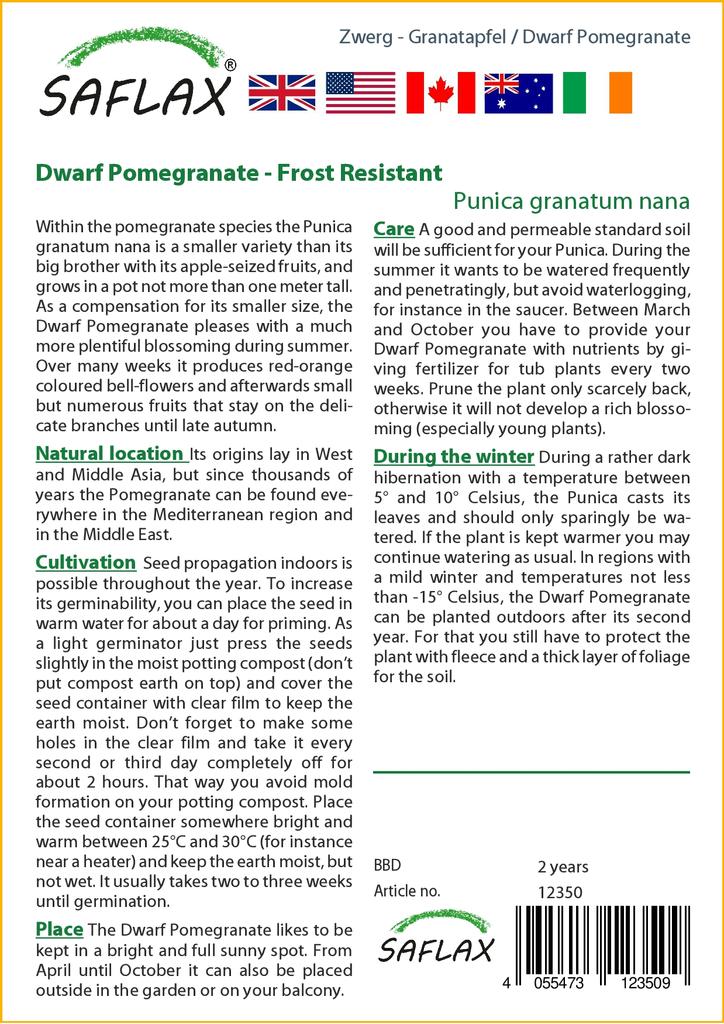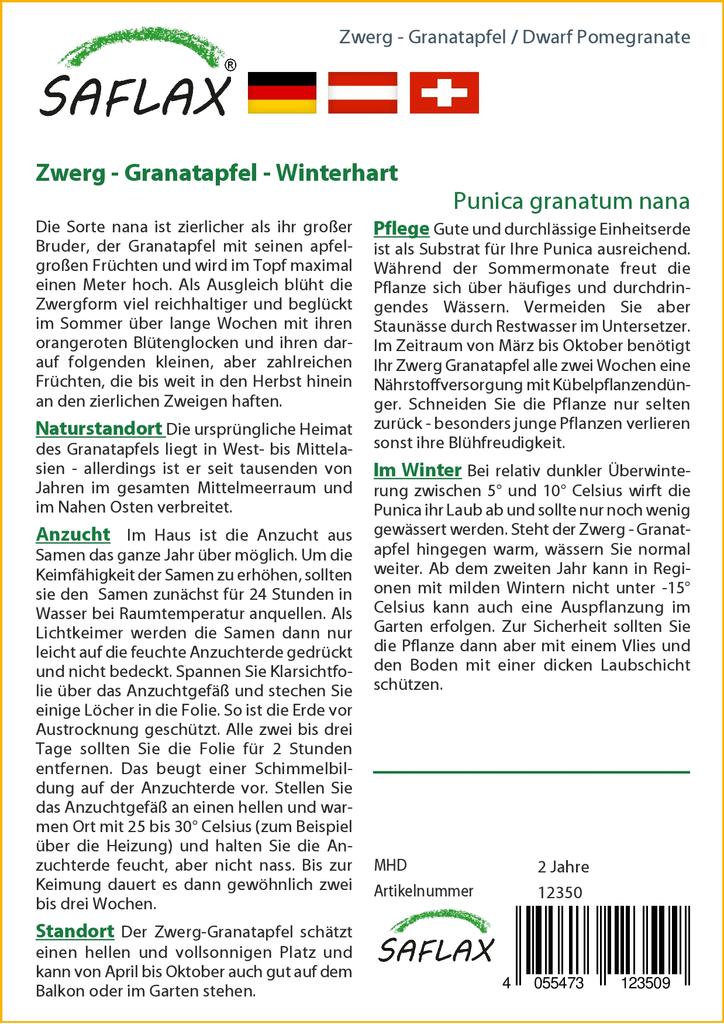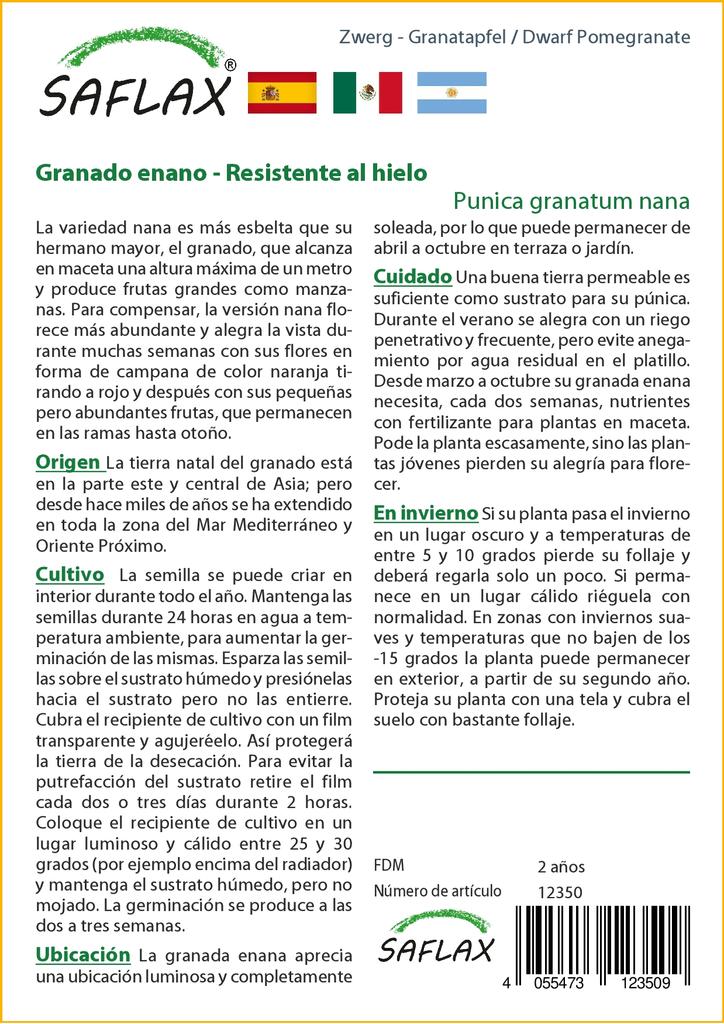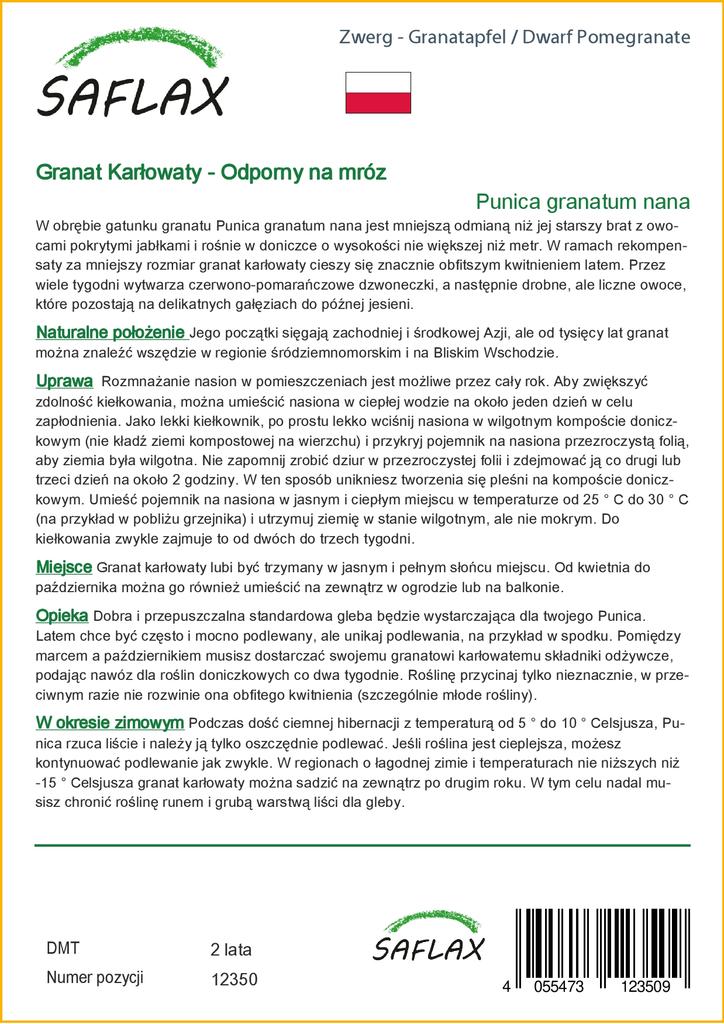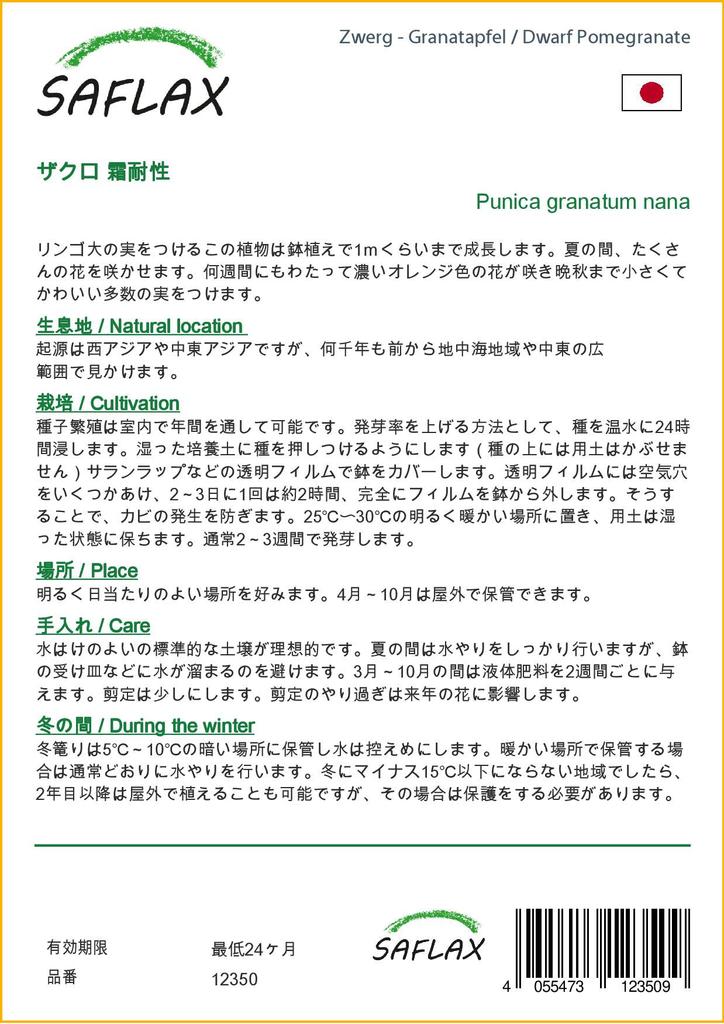Worth knowing:
Within the pomegranate species the Punica granatum nana is a smaller variety than its big brother with its apple-seized fruits, and grows in a pot not more than one meter tall. As a compensation for its smaller size, the Dwarf Pomegranate pleases with a much more plentiful blossoming during summer. Over many weeks it produces red-orange coloured bell-flowers and afterwards small but numerous fruits that stay on the delicate branches until late autumn.
Natural Location:
Its origins lay in West and Middle Asia, but since thousands of years the Pomegranate can be found everywhere in the Mediterranean region and in the Middle East.
Cultivation:
Seed propagation indoors is possible throughout the year. To increase its germinability, you can place the seed in warm water for about a day for priming. As a light germinator just press the seeds slightly in the moist potting compost (don’t put compost earth on top) and cover the seed container with clear film to keep the earth moist. Don’t forget to make some holes in the clear film and take it every second or third day completely off for about 2 hours. That way you avoid mold formation on your potting compost. Place the seed container somewhere bright and warm between 25°C and 30°C (for instance near a heater) and keep the earth moist, but not wet. It usually takes two to three weeks until germination.
Place:
The Dwarf Pomegranate likes to be kept in a bright and full sunny spot. From April until October it can also be placed outside in the garden or on your balcony.
Care:
A good and permeable standard soil will be sufficient for your Punica. During the summer it wants to be watered frequently and penetratingly, but avoid waterlogging, for instance in the saucer. Between March and October you have to provide your Dwarf Pomegranate with nutrients by giving fertilizer for tub plants every two weeks. Prune the plant only scarcely back, otherwise it will not develop a rich blossoming (especially young plants).
During the winter:
During a rather dark hibernation with a temperature between 5° and 10° Celsius, the Punica casts its leaves and should only sparingly be watered. If the plant is kept warmer you may continue watering as usual. In regions with a mild winter and temperatures not less than -15° Celsius, the Dwarf Pomegranate can be planted outdoors after its second year. For that you still have to protect the plant with fleece and a thick layer of foliage for the soil.
Picture credits:
- © © Tubifex - Public Domain - http://creativecommons.org/licenses/publicdomain/
- © Frank Laue - © Saflax - http://www.saflax.de/copyright
- © Frank Laue - © Saflax - http://www.saflax.de/copyright
- © Sabine Laue - © Saflax - http://www.saflax.de/copyright
- © Sabine Laue - © Saflax - http://www.saflax.de/copyright
- © Sabine Laue - © Saflax - http://www.saflax.de/copyright
- © Sabine Laue - -
- © Jebulon - Public domain - http://creativecommons.org/licenses/publicdomain/
- © Tubifex - Public domain - http://creativecommons.org/licenses/publicdomain/












